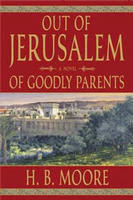By Heather B. Moore
“I have a new friend, and she looks like chocolate,” I told my parents when I came home on the first day of 2nd grade. We had recently moved to the suburb of Maadi, just outside of Cairo, Egypt.
I was a Utah girl, and in 1978, had not known anyone who was a skin-shade darker than olive. When I met Abby, I was fascinated by the color of her skin. But at the age of seven, I didn’t have a frame of reference to describe her, except for maybe chocolate-colored skin.
Abby and I became fast friends. We were both precocious girls who loved to play together at recess and sit together during class. Over the course of our friendship, we told many secrets to each other, passed notes in class, and we even slept over at each others’ homes. When we both moved back to the states, we shared sporadic letters while I was living in Utah and she in Chicago. Eventually we lost contact. But I’ll never forget her as my first friend who didn’t share the same religion, culture, or skin-color.
I’ve often wondered how exactly does a friendship start and what draws us together? Why do we immediately “click” with some and not with others? Most of my friendships have been slow transitions. It usually takes me quite a while to develop a trusting and strong relationship with another individual. But with Abby, it seemed that our hearts were connected right from the beginning.
True friendship can be an incredible blessing in our lives. When I started writing my first book, I told no one except my husband. I was afraid to share it with even my closest friends. When I started opening up a couple of years later, I found the support overwhelming. I also joined a network of other LDS writers, which led to new acquaintances. I held back my friendship for the most part because I felt that I had a full life, plenty of relationships to keep track of, and friendships take time to cultivate and grow. Who had the time for one more?
I was sorely mistaken. In the past few years, I’ve met wonderful people who have become some of my dearest of friends. As we set aside the busyness of life and listen to the promptings, we’ll find that there is always room for one more person, just as the Savior makes room for each of us.
Friendship is a two-way street and many times we are at the receiving end, but it’s important to be at the giving end as well. As we extend our friendship to others, offering care and a compassionate ear, we are truly serving in the highest court possible. Many times in my life, an act of service has been the beginning of a good friendship. The example Christ set for us was not only to serve each other but to love each other, and that comes through cultivating friendships.
Sister Hinckley said it beautifully, “Sisters, we are all in this together. We need each other . . . Those of us who are old need you who are young. And, hopefully, you who are young need some of us who are old. It is a sociological fact that women need women. We need deep and satisfying and loyal friendships with each other. These friendships are a necessary source of sustenance. We need to renew our faith every day. We need to lock arms and help build the kingdom so that it will roll forth and fill the whole earth.” (Glimpses, 254–255)
I think of Sariah, wife of Lehi, and her life-changing journey into the wilderness. A camel caravan typically took about four months to travel the distance from the coast of Oman to the city of Jerusalem. Sariah’s family spent eight years traveling that same distance. She was faced with many hardships, including giving birth in primitive conditions, trying to keep her family together, foraging for her growing family in a desolate terrain, and being asked by the Lord to no longer light fires, cutting off her ability to cook meat. How did Sariah cope with her burdens? I believe she had a friend, perhaps many friends. Certainly in her husband and in most of her children, but she had Ishmael’s wife.
It comforts me to imagine that these two women shared their heartaches, as well as their joys together, and that their friendship helped strengthen each other as they met their trials with faith and served each other in love.
--Heather Moore is the author of Women of the Book of Mormon: Insights & Inspirations, and the recent novel, Ammon.

 Well, and for men, but here is a list of some excellent new releases that are clean fiction and provide a compelling read.
Well, and for men, but here is a list of some excellent new releases that are clean fiction and provide a compelling read.












